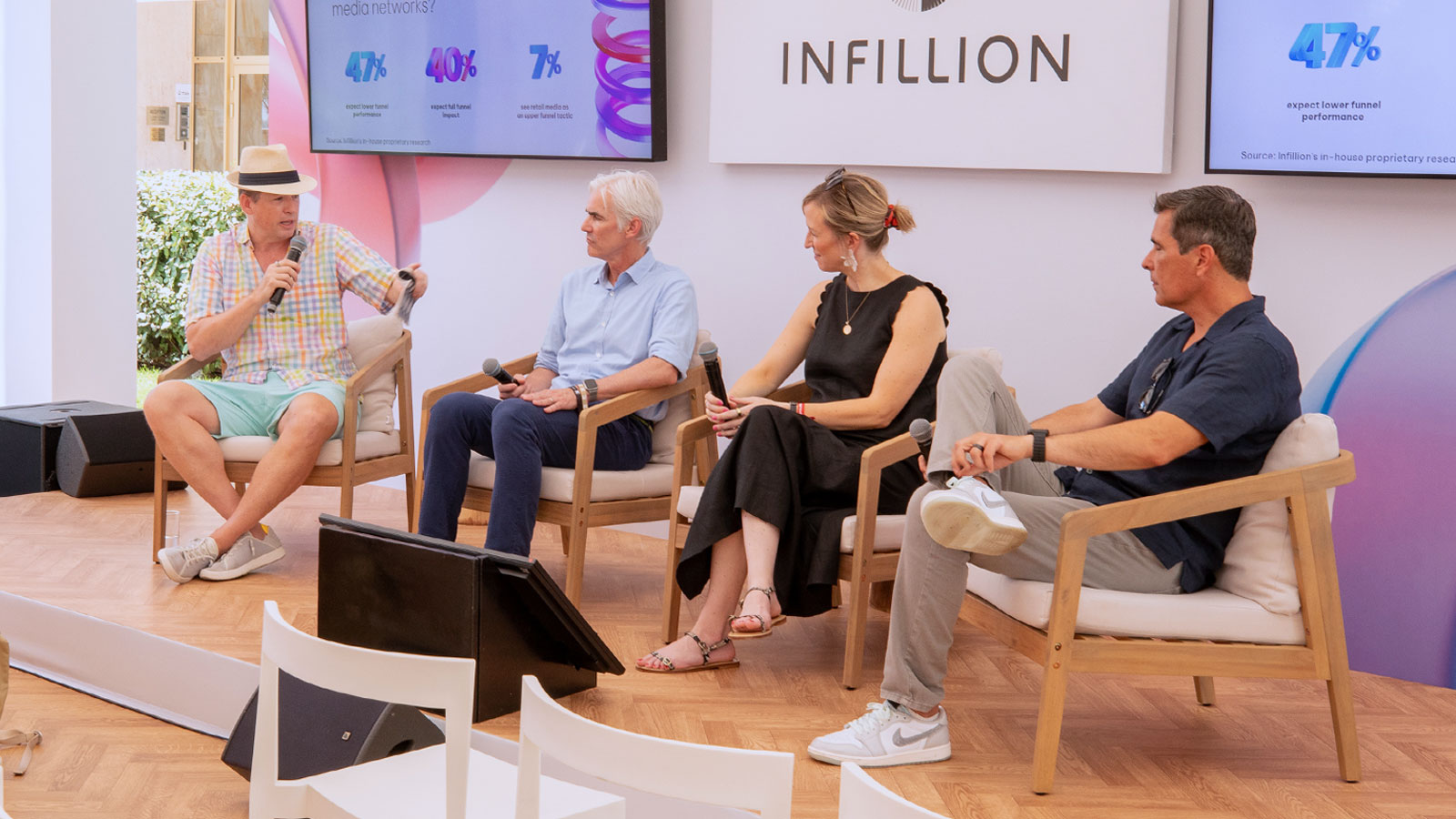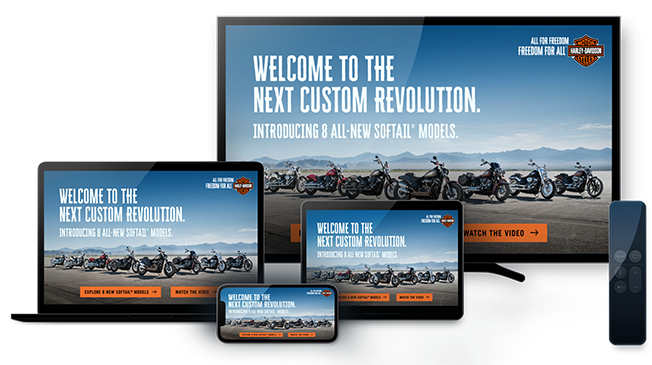Smart Partnerships Are Driving Retail Media’s Next Act

Retail media networks catapulted into the advertising spotlight a few years ago, a trend driven in part by the promises of rich first-party data from retailers’ shopping data and loyalty companies. Plus, they had an obvious use case: Brands that sold their products at a given retailer could pay to elevate their presence across that retailer’s properties. That made RMNs a go-to strategy for performance marketing, often for CPG brands.
But if RMNs are going to keep growing, they’re going to have to get past that perception. And it might be more seamless than anyone thinks: The purchase funnel, after all, isn’t what it used to be, with consumers increasingly taking non-linear paths as they make their way to purchase and spending more time in the middle of the funnel.
That’s what a panel at the Infillion Café discussed at Cannes Lions: What really is the perceived “brand versus demand” gulf in retail media, why is it still around in a post-funnel world, and what’s closing it?
Things are already changing. Jeremy Woodlee, general manager of Infillion’s Enterprise business, moderated the panel and previewed some forthcoming research that Infillion will be releasing about media buyers’ attitudes toward retail media networks. While 47% of buyers see RMNs as a channel for lower funnel objectives and only 7% see it as a conduit for upper funnel KPIs, an additional 40% expect full-funnel results from RMNs. Woodlee said that the numbers highlight “that tension between the natural perception and how it’s actually happening in-market.”
One reason why this is possible is that clever partnerships have emerged across the industry that unlock new possibilities for RMNs. Take Pinterest, for example: Carrie Sweeney, the company’s VP of retail, said on the panel that the platform has had a yearslong perception as a destination for upper-funnel KPIs. After all, 96% of searches on Pinterest are unbranded. Yet Pinterest has formed successful partnerships with retail media networks like CVS Media Exchange, whose head of strategic development Paul Lentz also joined the panel.
“Most pinners come to the platform exploring broad ideas,” Carrie Sweeney explained. “They’re saying ‘I want a new beauty regimen.’ CVS can slip in with beauty ads and steer them toward a new brand.”
“It’s a very close collaboration. We build really strong audiences that have strong affiliations with brands in the topics where they’re expressing their intent on the platform,” Paul Lentz said. “What retail media really promises is this ability to close the loop on attribution. While Pinterest doesn’t have products, they have consumers interested in products.”
CVS Media Exchange also differs from most other big players in retail media in that the majority of their sales are in-person. “Most of our transactions, over 95% of them, are still happening in our 9000 stores across the U.S.,” Lentz explained. “We’re not really your first choice for e-commerce… [but] interestingly enough, over 50% of our consumers are coming into the store after they browsed online.”
How does this rich full-funnel data appeal to advertisers who aren’t selling a retail product? That’s what Steve Hartmann, Head of Integrated Marketing at Experian Consumer Services, was on the panel to talk about. “Our customers can’t go to the shelves and buy a product,” he said. Retail media is “a data tool, it’s a targeting tool for us. We’re trying to figure out how shopper behavior really works with Experian. We have products for people with good credit, products for people with bad credit – we want to get our credit marketplace introduced to these people.” Retail media data can inform a company like Experian about whether customers they’re looking to reach are luxury shoppers or frugal bargain-hunters.
It’s those kinds of unique partnerships that are unlocking retail media’s full potential. “A lot of people started with the lower funnel story but they’re experimenting with different partnerships and realizing it’s a full-funnel way to reach consumers and tell stories and deepen relationships,” Infillion’s Jeremy Woodlee said. “It’s a fascinating turn.”
Marketing to a collapsed funnel
The panel agreed that the mistaken perception that retail media networks are for lower-funnel advertising to ready-to-shop consumers is rooted in the lingering presence of outdated metrics and modalities in advertising. “Consumer journeys are chaotic and unpredictable,” Jeremy Woodlee said. Maybe they always were, but we couldn’t measure them that way – and now we can.
“We often think about what’s our average time to convert on Pinterest,” Carrie Sweeney said. “It can range from a matter of seconds to weeks and months. Few brands are asking us only for 3-day-or-less click ROAS anymore – the time to convert can be a matter of seconds if they see something that really sparks that joy. It’s become really hard to predict what will flip them, but we just tell the brands to be there whenever they’re ready.”
“How we measure, the precision of the targeting, the ways consumers can engage with content – it’s so vastly different from this linear idea of upper-mid-lower funnel,” Paul Lentz said.
“For us, upper funnel versus lower funnel, performance, brand – all of our marketing has to perform, it has to perform in some way,” Steve Hartmann said. “If it’s a brand metric it’s a brand metric, if it’s performance or ROI it’s considered lower funnel, but all marketing is performance marketing in some way.”
Lower funnel. Upper funnel. Post-funnel. Infillion has solutions for all your KPIs – reach out today.
Subscribe to our blog:
Related Posts:

From Data to Decisions: Preparing Retail Media for AI Agents
Why infrastructure maturity is the key to future growth Artificial intelligence is already reshaping digital advertising. Predictive algorithms now steer bidding strategies, and machine learning models help refine audience targeting. But in retail media, the...

Retail Media’s Budget Tug-of-War: Uniting Brand and Demand Through Full-Funnel Strategies
Retail media has grown up fast. What started as a straightforward way to capture search dollars at the point of purchase is now one of the most scrutinized and strategic channels in the industry. Retail media is no longer just about conversion rates and ROAS—it’s...

From Hype to Reality: Agency Perspectives on Retail Media Networks
Every week seems to bring a new retail media launch or partnership announcement. Investment is rising, innovation is happening, and retailers across verticals are racing to build and/or improve their media networks. But when we surveyed agency leaders for our latest...
Let's Connect

